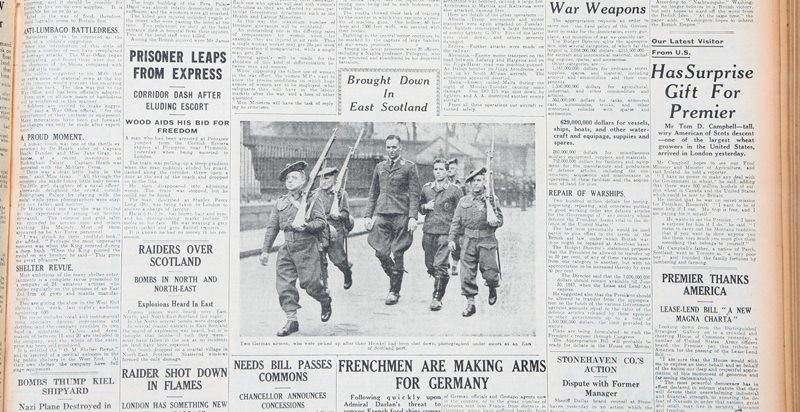A Dundee company will help create one of the world’s premier historical resources an online collection of more than 40 million newspaper pages.
The old saying may be that today’s newspapers are tomorrow’s fish-wrappers, but brightsolid is to work with the British Library to create the virtual archive of British newspapers that charts three centuries of history and provide researchers with an unrivalled online historical database.
Over the next decade they will digitise around 40 million pages from 52,000 national, regional and international titles.
Four million pages will be digitised over the first two years with the first pages available to view online from next year.
British Library chief executive Dame Lynn Brindley said, “Historic newspapers are an invaluable resource for historians, researchers, genealogists, students and many others, bringing past events and people to life with great immediacy and in rich detail.
“Mass digitisation unlocks the riches of our newspaper collections by making them available online to users across the UK and around the world by making these pages fully searchable we will transform a research process which previously relied on scrolling through page after page of microfilm or print.”
The British Library has one of the largest collections of newspapers in the world and around 30,000 researchers use its newspaper library at Colindale each year.
Digitised material will focus on specific geographical areas, along with periods such as the census years of 1841 and 1911.
Additional categories, looking at specific subjects such as wars or the suffragette movement, will also be created to build a critical mass of material for researchers.”Exciting development”Brightsolid, a subsidiary of D. C. Thomson and Co Ltd, was selected following an EU procurement process.
The company has already delivered the successful 1911census.co.uk project with the National Archives.
Chief executive Chris van der Kuyl said, “We’re delighted to be working with the British Library on such an exciting project.
“Digitisation will mean that those people who haven’t previously been able to access the physical resource will now be able to access it from anywhere at any time.
“In particular, it is an important resource for the genealogy community, which we are closely involved with through our brands findmypast.co.uk and genesreunited.co.uk, helping them to bring to life how their ancestors lived.”
He added, “We’re also closely linked to the publishing community through our parent company D. C. Thomson, and we very much see this project as a collaboration with the industry.”
Newspaper Society president David Fordham said, “This initiative is a highly significant and exciting development which will unlock many of the great newspaper treasures that lie within the millios of pages in the British Newspaper Library archive at Colindale.
“It represents a particularly exciting opportunity for regional newspapers which have a long and rich heritage and capture changing times across the centuries.”
Dundee University vice-principal Professor Christopher Whatley said, “Newspapers are one of the most important sources for historians.
“They act as a mirror to the culture and society of the time, and having a massive online resource such as this will only help our understanding of the past.”
He added, “Until now, it has been very difficult to get to see most old newspapers as they’re often stored in inaccessible places.
“They’re also often very heavy and dirty, and as they’re not indexed it can take days or weeks to find what you’re looking for.
“This online resource means researchers can work on newspapers and keep their hands and clothes clean also, at the press of a key they can find just the item they’re looking for, which is brilliant.”
Professor Whatley said, “Everyone who is interested in researching the past, including academics, students and enthusiastic amateurs tracing their family’s past, will be able to benefit.”
Photos used under Creative Commons licence courtesy of Flickr user stevecadman.
